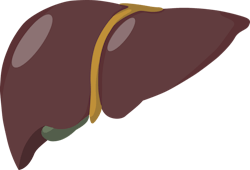In those with fatty liver disease, a person’s fat goes to their liver instead of their fat tissue, either because of an absence of fat depots, which is seen in the rare genetic disease lipodystrophy, or because the depots are too full, which is seen in people with obesity, according to a news release from Michigan Medicine.
One third of these people will go on to develop nonalcoholic steatohepatitis, or NASH — an advanced form of fatty liver disease brought on by progressive inflammation and scarring in the organ.
In 2002, Michigan Medicine endocrinologist Elif Oral, MD, who had just moved from the National Institutes of Health (NIH) at the time, published her discovery that patients with severe lipodystrophy lack leptin, a hormone that helps curb appetite and control weight gain. When given leptin as a supplement, the patient’s serious metabolic abnormalities like NASH improved substantially.
Oral set out to U-M to further study the role of leptin, now in more common forms of NASH. Almost two decades later, her research team found that whether from a leptin deficiency or the presence of partial lipodystrophy, patients with NASH and relatively low leptin levels can mobilize the extra fat in their liver, out of their liver, and help reverse their condition by undergoing leptin therapy.
“Familial partial lipodystrophy often accompanies NASH. It’s a rare, genetic condition where patients have a lack of fat in their extremities but remain fat in their upper body,” Oral explained. “I wanted to test the effect of leptin in both those with this rare condition and those that just present with NASH to see if there would be a difference in therapeutic outcomes.”
This work, which is the first of its kind in humans and compiles research from three different studies, showed that leptin is an important signal in regulating fat deposition in the liver, and reversing fat deposition and its subsequent NASH.
The trials consisted of male patients because Oral found that 35-40% of the men that had leptin levels measured had levels less than the twenty-fifth percentile of their body weight, making them ideal study candidates.
After blind, paired liver biopsies, both groups were found to have reduced fat in the liver and lower NASH scores after 12 months of leptin therapy. The patients also had improved insulin sensitivity and body weight.
The findings are only applicable to leptin, but Oral thinks other molecules or treatments that activate leptin in the body could be of focus in future studies in an attempt to widen the therapeutic window for these patients.





